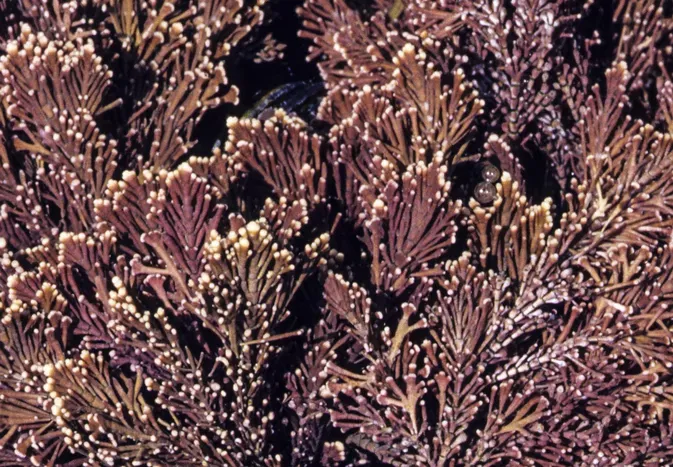Why Coralline Algae Turns White
Updated on 04/26/24

Unveiling the Enigma of White Coralline Algae: A Comprehensive Guide
In the vibrant tapestry of marine ecosystems, coralline algae stand out as remarkable architects of underwater landscapes. Their intricate skeletal structures form the foundation of coral reefs, providing habitat and shelter for a myriad of marine life. However, when these algae don their ghostly white hues, it's a sure sign that something is amiss.
Delving into the Depths of Coralline Algae Physiology
Coralline algae, unlike their green counterparts, possess a unique cellular structure. Their cells contain a mineralized skeleton composed of calcium carbonate, which gives them their characteristic chalky appearance. This rigid skeleton provides the algae with protection from grazing and erosion.
The Etiology of Coral Bleaching: A Multifaceted Puzzle
When coralline algae lose their vibrant hues and turn white, it's a phenomenon known as coral bleaching. While often associated with elevated water temperatures, coral bleaching can also result from a myriad of other stressors, including:
* Environmental Pollutants: Industrial runoff, agricultural fertilizers, and sewage discharges can introduce toxins into the water, disrupting the algae's physiology.
* Nutrient Imbalances: Changes in nutrient availability, such as nitrogen and phosphorus, can alter the algae's metabolic processes, leading to bleaching.
* Herbivore Overgrazing: Excessive grazing by marine herbivores, such as urchins and fish, can damage the algae's photosynthetic tissues and promote bleaching.
* Disease Outbreaks: Coral diseases, caused by bacteria, viruses, or fungi, can weaken the algae and make them more susceptible to bleaching.
Case Studies: Illustrating the Causes of White Coralline Algae
Example 1: Thermal Stress in the Great Barrier Reef
In 2016, elevated ocean temperatures triggered a catastrophic coral bleaching event on the Great Barrier Reef. Widespread loss of coralline algae was observed, with entire reefs turning ghostly white. The extent of the bleaching was directly correlated with the duration and intensity of the heatwave.
Example 2: Pollution Impact on the Florida Keys
Sewage discharge and agricultural runoff have significantly degraded the water quality in the Florida Keys. The resulting nutrient pollution has fueled algal blooms and created nutrient imbalances that have stressed coralline algae, leading to widespread bleaching.
Example 3: Herbivore Overgrazing in the Caribbean
Overfishing and habitat degradation have disrupted the delicate balance of marine ecosystems in the Caribbean. The decline in herbivores has allowed populations of grazing sea urchins to explode, leading to overgrazing of coralline algae and subsequent bleaching.
Revival and Restoration: Strategies for Preserving Coralline Algae
Combating the causes of coral bleaching is crucial for preserving coralline algae and the marine ecosystems they support. Conservation strategies include:
* Reducing Pollutant Discharge: Stricter regulations and improved wastewater treatment can minimize the introduction of toxins into marine environments.
* Nutrient Management: Implementing best practices for agricultural fertilization and reducing sewage runoff can help maintain nutrient balance in coastal waters.
* Herbivore Management: Marine protected areas and sustainable fishing practices can limit overgrazing and protect coralline algae populations.
* Disease Control: Research and monitoring can help identify and mitigate coral diseases to reduce their impact on coralline algae health.
Conclusion: Guardians of the Marine Realm
Coralline algae are not just passive inhabitants of the ocean; they play a vital role in shaping marine ecosystems. Their ability to create complex structures and support diverse marine life makes them indispensable components of healthy and resilient coral reefs. Understanding the causes of white coralline algae is paramount for developing effective conservation strategies and ensuring the long-term sustainability of our oceans.
Explore More Pets

Freshwater Aquarium Filters
How to Deal With Cloudy Aquarium Water

Saltwater Aquarium Filters
How Do You Remove Chloramines From Tap Water?

Freshwater Aquariums & Habitat
Can I Keep My Koi Fish Inside?

Saltwater Aquariums & Habitat
14 Best Floating Plants for Your Aquarium

Freshwater Fish Health
How to Treat Ich on Freshwater Fish

Saltwater Fish Health
Fin Rot in Aquarium Fish

Freshwater Aquarium Filters
How to Do Aquarium Water Changes

Saltwater Fish Health
How Do Fish Get Parasites?